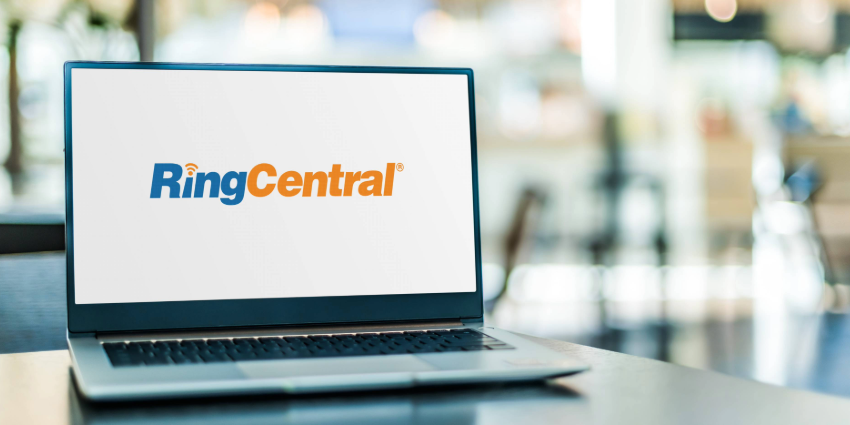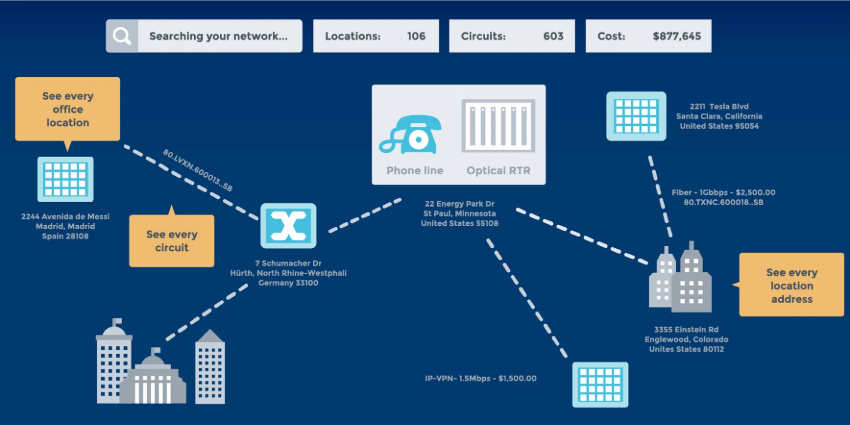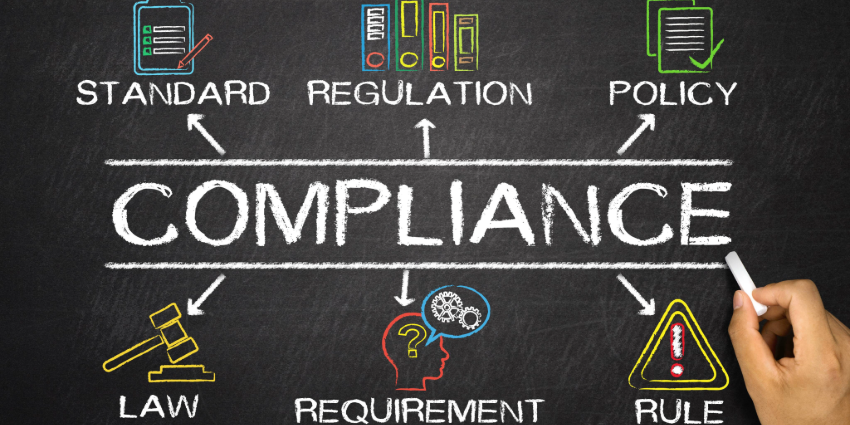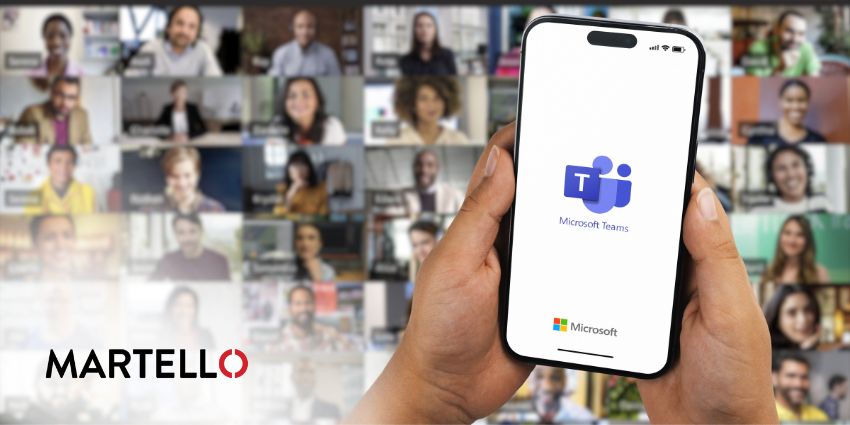8×8 soared to the top of the pack in the communications environment in the last few years, becoming the world’s first communications cloud to combine UC, collaboration, contact centre, and analytics. Focused on developing a solution that brings all avenues of communication together, 8×8 ensures that everyone can make the most out of their unique communication stack, whatever that may mean to them. With the X Series, businesses can finally eliminate information silos and access real-time intelligence in any environment, all while paying for only the tools they need to use.
But, where did 8×8 start out, and what lead it to become one of the most innovative companies in the communication environment? I sat down with one of the original founders of 8×8, CTO and Chairman, Bryan Martin. For years, Bryan has been a tech visionary for 8×8, helping the organisation to patent some of the most disruptive and pioneering telecom technologies. Bryan led 8×8 as CEO from day one as a VoIP pioneer, to its current position as the provider of a leading UCaaS solution.
In my conversation with Bryan, I was able to fully explore the long history of 8×8 and how the platform has evolved over the years. Here’s what you need to know about the mindset and thought processes behind the “X” of 8×8.
Tell us About the Beginning of 8×8 and How You’ve Grown?
Bryan told me that the roots of 8×8 began in creating technology for the communications industry. When he first joined the company, for the first decade or so, they were focused on providing solutions to companies like Alcatel Lucent, and even Cisco. “People would take what we created and sell it on to their end users. A lot of the things we developed had to be invented and created with a set of standards. It took time, but when we transitioned into being a service provider, it meant we had our own technology stack.”
By developing a unique technology stack, 8×8 was able to access a considerable advantage. The company could price its software however it wanted, but it also meant that it had the opportunity to go out and innovate whenever a new problem appeared on the market. They weren’t limited to waiting for a new patch from the companies they were working with. “Now we stick to this strategy of owning everything we provide. If we don’t have the solution to something, we’ll acquire or create it.”
One interesting thing that Bryan noted is that from day one; there are parts of the 8×8 environment that have never had to change. For instance, the way that the company does failover means that they’ve only had 3 major failures during the history of the company – caused by natural disasters for the most part. “From day one, we felt that the high availability of our services was essential, so we architected it into the core of what we do. We’ve updated what we offer but haven’t had to make significant changes to some of the fundamental architectures.”
How Important is X Series and the Microservices Strategy?
On the other hand, 8×8 has also re-platformed all of the applications and solutions it offers so that it can deliver options to clients in modern ways. Moving to applications that run in the cloud through microservices meant that 8×8 could create the unique concept of the X Series, which delivers a host of combined experiences across contact centre, UC, and collaboration.
For 8×8 and Bryan, the microservices architecture is a crucial part of what makes 8×8 so special. From day one, the company has focused on innovation and providing the right shared services as a platform.
“There’s an underlying platform now that all of our customers can access, with these different applications running on top. Everyone gets the same experience of those applications too, regardless of where they access them from”
The microservices environment allowed 8×8 to address any weak links in their architecture and provide their customers with unlimited scalability. “There are plenty of companies out there that are operating on an environment that has a hard limit of around 2,000 users. If they want to put a new server down after that, disconnections and silos start to occur.”
On the other hand, microservices provide a 100% scalable environment that allows companies to continue building and evolving, however they see fit, all without compromising on customer or user experience.
What Keeps You Up at Night?
I was interested to find out what kind of challenges have been the most significant for Bryan and the 8×8 team. Bryan told me that they’ve always been invested in creating the best environments for their customers. 8×8 has embraced both Google Cloud and AWS in a large and strategic way. This means that most of the portals and applications that their customers use are supported by vast and reliable providers. However, 8×8 still has its own services and data centres located around the world to do the routing along with other critical applications and processes.
This means that 8×8 can maintain as much control as possible over the communication data moving through their data points. “Our ability to measure and manage what’s going on at every point in our services and tell servers where they need to route data more reliably means that we can avoid letting customers down. Our global intelligent reach ensures that we can change the route that media takes to provide the best levels of reliability.”
It’s not just the redundancy of 8×8 that puts customer’s minds at ease either; it’s also the amazing security solutions that start at the core of the company’s technology. “We’re always developing our security strategy, learning from mistakes made over the years.” Martin told me that toll fraud is an issue that all communication providers have had to worry about over the years. The business has the right tools in-house now to detect fraud and figure out what’s going wrong. At the same time, there’s a massive set of procedures and processes that 8×8 uses with its people too.
“These things need to be controlled not just at a technology level, but with the people too. To avoid being kept up at night by various security and redundancy issues, I work constantly through the day on making sure that 8×8 can always support the next biggest company, with new evolutions and innovations.”
The Rise of Video Communications
There are many new and exciting innovations happening in the communication world today. One of the most thrilling new developments is in the world of video communications. This is just one of the areas that 8×8 is very well known for. I asked Bryan how 8×8 is keeping up with the rate of change, and he told me that one crucial aspect is the scalability of the 8×8 technology.
“The flexibility and scalability of our technology today is incredible. With our upcoming launch of the new Meetings experience we will be able to support up to 50 contributors in any meeting – people who have full meeting controls and share content. However, we will also allow people to stream to an unlimited number of viewers too. These people can’t actively participate in the meeting, but they can watch.”
According to Bryan, it’s exciting because if you miss something in the meeting as a watcher, you can rewind, or pause the video when you need to pop out of the office. You can also set up presence factors that make sure you’re not distracted by pop-ups and beeping when you’re busy in a meeting, so you’re more likely to stay focused on the task at hand.
At the same time, 8×8 offers its in-built directory, which means that anyone can be pulled into a conversation at any time. Having that core corporate directory is an important advantage for 8×8.
“In 1990 we had dial-up video, and it was hard to imagine it ever becoming a big part of the communications space. However, now it’s fair to say that video is far more mainstream.”
It’s all about Improving Experiences
We’re living in a world where experience comes first – whether it’s customer experience, user experience, team or business experience. I asked Bryan how 8×8 handles this challenge.
“Experience is a huge consideration, and it’s always something we can work on making better”
The conversation that 8×8 supports focuses on providing people with a single, real-time solution for all of their communication methods. There’s a single app on mobile and a single pane of glass on the desktop. This helps to ensure that users aren’t constantly overwhelmed with the media that’s coming at them from all angles. “The notion of switching between multiple apps to handle all of your conversations makes it much harder to multi-task. We wanted to make transitions between conversation as simple as possible.”

On mobile, 8×8 ensures that people can access everything through a simple application, while in the desktop world, there’s a single dedicated window that only does one thing at a time. This means that it’s a very unique experience. “We also need to make sure that our apps integrate seamlessly with other apps, so at the core of the X series, we make sure that everything works seamlessly together.”
“It’s not just a marketing strategy. We’re solving real problems for people jumping between disparate tools.”
All the while, 8×8 is concentrating on making adoption as easy as possible for every business. Bryan told me that some CIOs will allow 8×8 to interact with and train their employees for them, but others want to do the training themselves. 8×8, therefore, concentrates on getting UC to a point where anyone can use it simply and seamlessly. This means that everyone can instantly adopt the tools they need and use them to make a real difference to their workflow.
What Does the Future Look Like for 8×8?
With such an amazing platform to build on, I was keen to see where the future might head for 8×8. Bryan told me that going forward, scalability and microservices are going to continue being a crucial part of the 8×8 offering. However, like many other companies, 8×8 is also getting involved with artificial intelligence and big data too.
“We knew that we needed to gather as much information as possible on calls and conversations to find out where problems were happening so we could respond to them. We were able to develop real-time insights on what was going on in the environment for our customers at a very early stage, and we’ve continued building on that ever since.”
Bryan told me that now that data is the new currency of IT, 8×8 knows that its customers need access to all of the data they can get from their communication landscape. 8×8 is focused on helping their clients to take advantage of the information available to them so that they can use it to solve problems more effectively.
“AI and machine learning emerged as a way to manage all of that huge amount of data we were already collecting”
Today, 8×8 is still working on figuring out how to best present the right data to their customers. The business acquired the MarianaIQ team last year to take advantage of their incredible ML and AI skills and insights. The combined companies can now take advantage of available data on a deeper level to create more immersive experiences for customers.
“My goal is to end up with a solution that means that customers don’t have to worry about what’s going on with AI and ML in the background – they’ll just experience the benefits.” In the months and years to come, 8×8 will continue to combine different applications and solutions to aggregate as much knowledge as possible into a bigger and more complete view of what’s going on in a business. “There’s a treasure trove of data available, and we want to make sure that our customers can run a communications environment that’s as knowledgeable and immersive as possible.”







